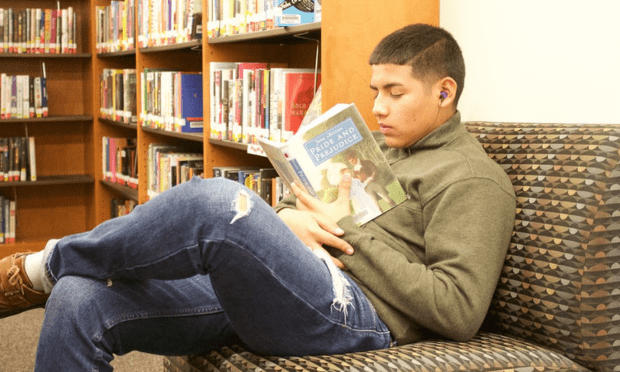I cannot understate the importance of helping students realize that reading is enjoyable and fun. If there is one lesson I want my students to walk away with from my class, it is that reading opens your mind and heart, is truly enjoyable, and will expand your outlook on life. I have a HUGE classroom library, and my students have access to checking out the books.
As Neil Gaiman stated: The simplest way to make sure that we raise literate children is to teach them to read, and to show them that reading is a pleasurable activity. And that means, at its simplest, finding books that they enjoy, giving them access to those books, and letting them read them. Learn more about Neil Gaiman.
However, just reading may not truly push students. To really push their understanding or comprehension, we need to choose books that challenge them and then ask questions about those books that encourage them to think. When I run book clubs for my students I give them choices, and group them depending on their interests. Their only homework is to read to the assigned place (and the kids assign the amount they are reading in agreement with their group). Then when they come into the class, they receive a question based on one of the Icons of Depth and Complexity or one of the Content Imperative Icons. Icons are simply pictures, but in this case they represent a manner of thinking that lends itself to deeper and more complex thought.
Examples of questions include:
- What pattern of behavior do you recognize in the main character or another major character?
- How do the values of the protagonist or antagonist influence his or her behavior?
- Discuss any changes the main character has already experienced and what caused those changes. What were the costs of those changes?
These questions are based on the Patterns, Ethics, and Over Time icons. They seem simple, but when the students are conversant with them, the level of discussion that takes place can be outstanding. Last year, I asked my students the third of the questions about the book they were reading. I expected good discussions, I did not expect to extend the discussion from one day into two because the students got so involved in the answer that they wanted to do nothing else.
You can easily take these questions to a read aloud that you are doing with your students. I am currently reading “The World’s Greatest Kid,” by John David Anderson to my 5th graders, and they are loving it. I asked them about the Ethics behind the contestant guide pushing the protagonist about his father, and while most were able to answer it was not okay, one of my students pronounced that “This guy is really going beyond what he should be doing. He is going to make this kid explode any second.” The really cool thing about this – that is what happened in the book.
When you model reading to the students, and have them read books they are interested in, and then ask good thought provoking questions, you help to build a love of reading and of thinking about what you are reading that will benefit your students or children for the rest of their lives.
Author: Daniel Brillhart, TAG Specialist at Gattis Elementary School

